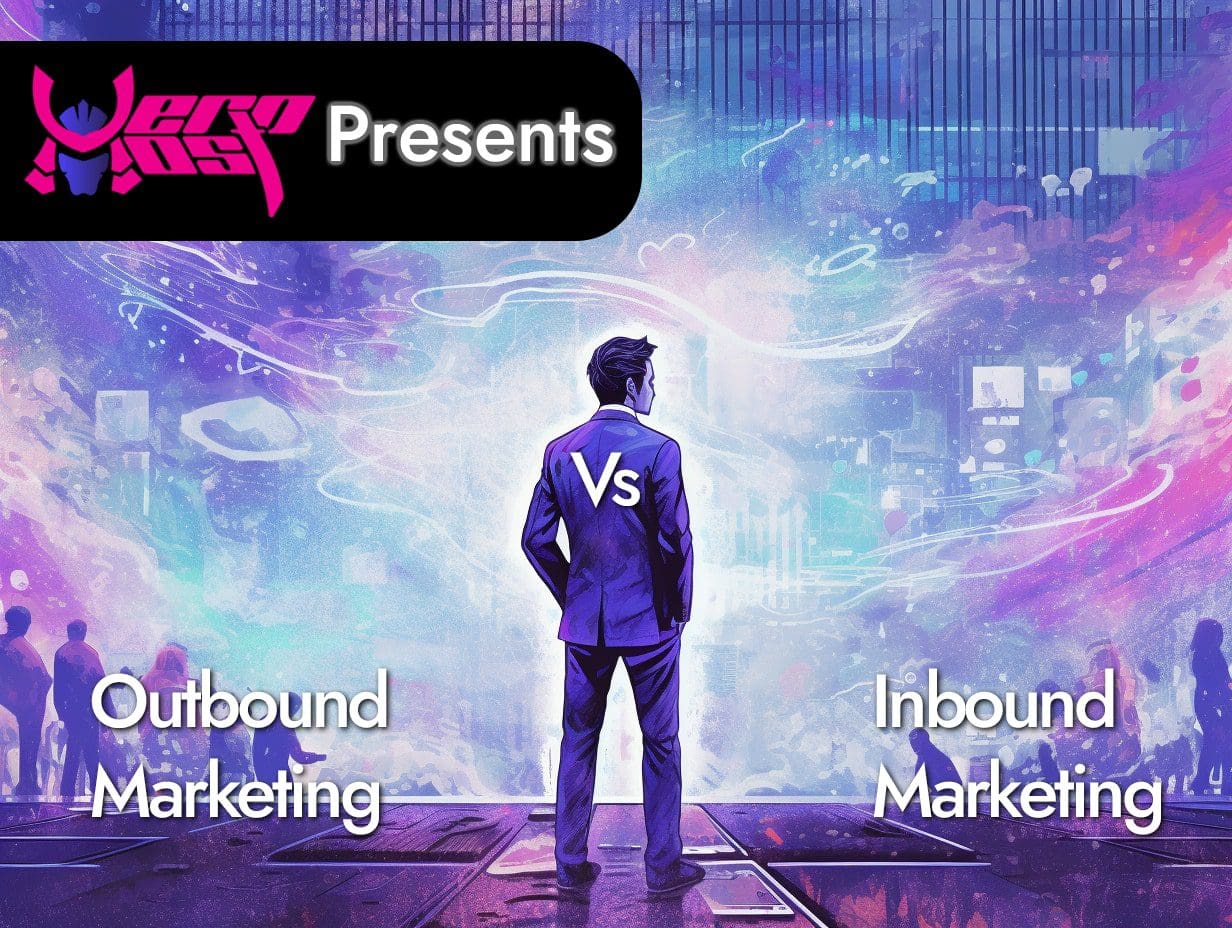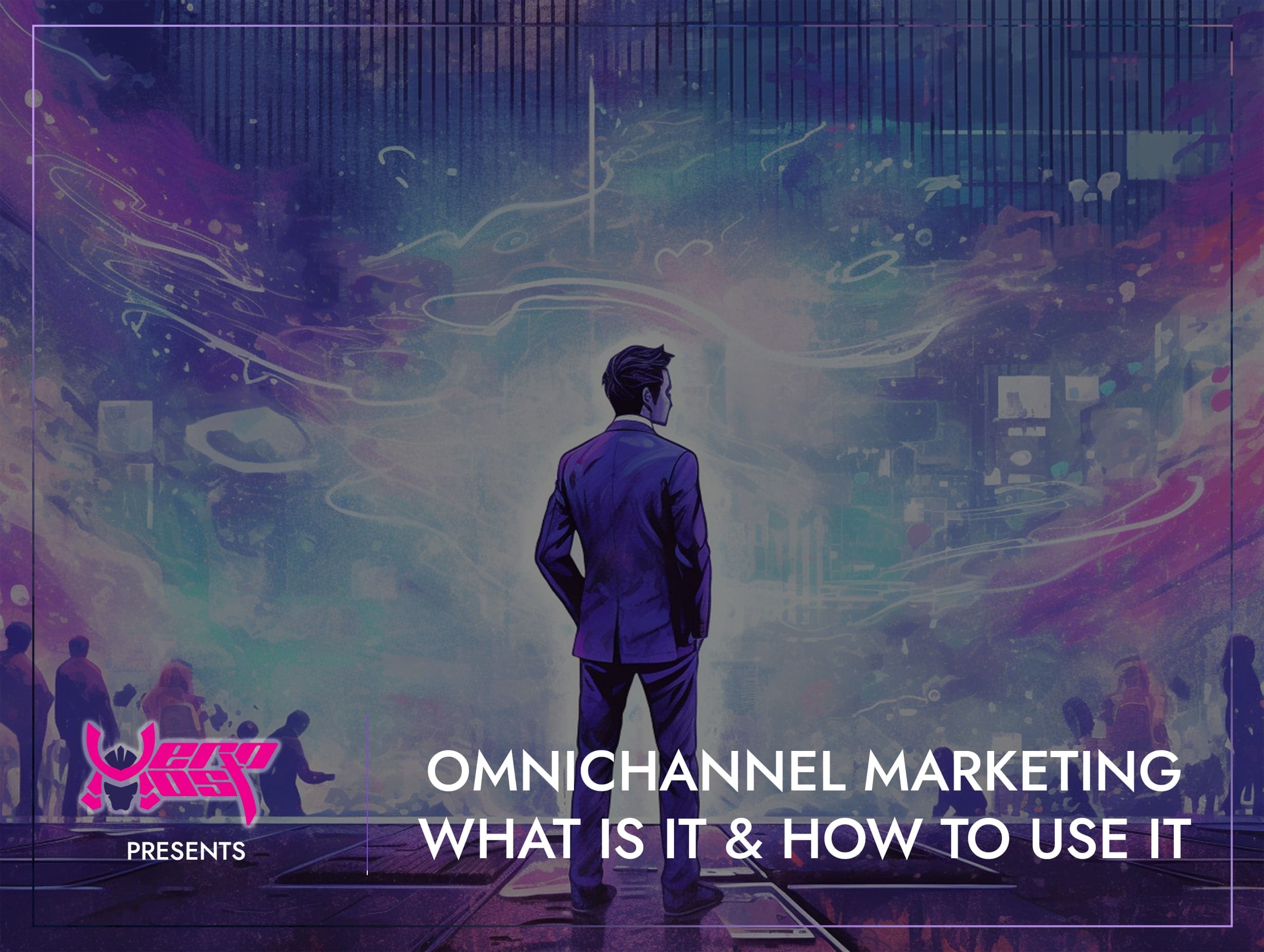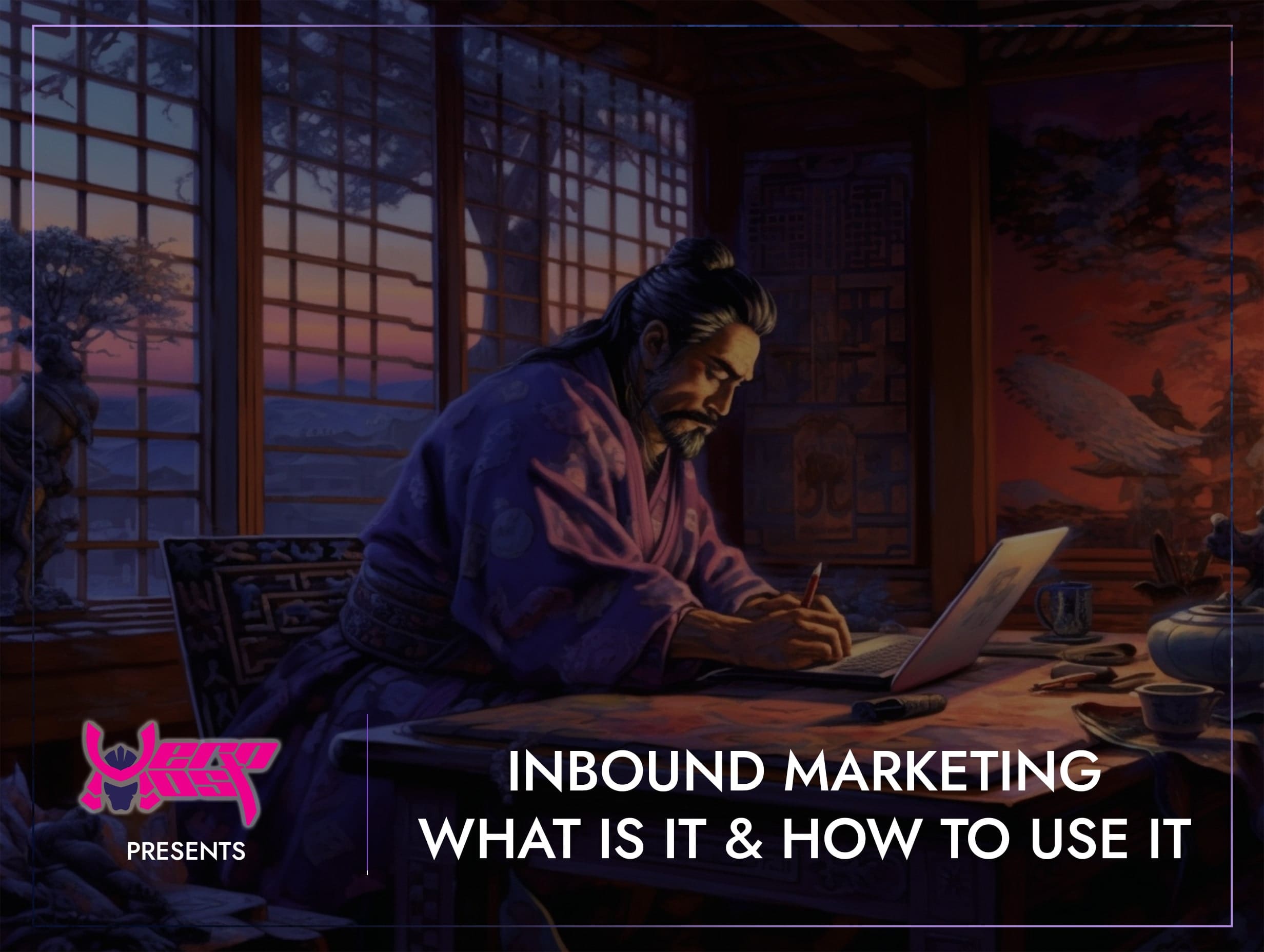Inbound Vs Outbound Marketing
- Home
- Inbound Marketing
- Inbound Vs Outbound Marketing

- Mikey Ryu
- August 10, 2023
- 0
Inbound Vs Outbound Marketing
Inbound or Outbound Marketing
Marketing has been around for as long as selling things to people and it’s been split into two main methodologies, Inbound and Outbound. Both of these have their benefits and cover different styles and types of marketing tactics. In this blog we will cover what they are, how they benefit you and /or your prospects, and what marketing falls under what methodology.
The Outbound Way
Outbound marketing refers to a traditional marketing approach where companies actively initiate communication with their target audience to promote their products or services. This strategy involves reaching out to potential customers through various channels such as television and radio advertisements, print media, cold calling, email blasts, and direct mail. Outbound marketing aims to raise brand awareness, generate leads, and drive sales by broadcasting the marketing message to a broad audience. However, this method often faces challenges due to its interruptive nature, as it relies on pushing information out to consumers who may not be actively seeking it. In recent years, outbound marketing has evolved to incorporate more personalized and targeted techniques, seeking a balance between capturing audience attention and respecting their preferences for relevant content.
The Marketing Strategies:
With there being a lot of media to cover and many different places that your audience is gathering their information from you have to know the correct strategy and the correct time and place to reach your audience.
Outbound Methodology Includes:
- Television Advertisements
- Radio Advertisements
- Print Media
- Cold Calling
- Direct Mail
- Email Marketing
- Outdoor Advertising
- Trade Shows and Events
- Sponsorships
- Seminar and Workshops
In short, Outbound Marketing is getting the attention of your audience by proactively talking and communicating with them and using methods that involve you to directly interact with your audience.
The Benefits of Outbound Marketing
As with anything, there are many benefits to outbound marketing and some negatives but first let’s take a look at some of the benefits.
- Wide Reach – Outbound marketing allows you to reach a large and diverse audience quickly through channels like television, radio, and print media.
- Brand Awareness – It helps increase brand recognition by exposing your message to a broad audience, which is essential for new or lesser-known businesses.
- Immediate Impact – Outbound strategies like radio or television ads can create an instant impact, driving immediate attention and interest.
- Lead Generation – Techniques like cold calling and direct mail can generate potential leads and inquiries from interested individuals.
- Tangible Presence – Print materials and direct mail create a physical presence that potential customers can touch and interact with, enhancing memorability.
- Controlled Messaging – With outbound marketing, you have control over the message you want to convey and how it’s presented, ensuring consistent branding.
- Targeted Outreach – While traditional outbound techniques are often broad, modern outbound methods allow for more refined targeting of specific demographics.
- Establishing Authority – Seminars, workshops, and presentations position your brand as an expert in your field, building trust and credibility.
- Supplementing Digital Efforts – Outbound marketing can complement your digital strategies by reaching potential customers who might not be online.
- Maximizing Offline Engagement – For audiences that are not heavily engaged online, outbound marketing provides an effective means of communication.
The negatives that surround outbound marketing
- Intrusive Nature: Outbound marketing strategies can be seen as interruptive, as they involve reaching out to potential customers who may not be actively seeking the information or product being promoted.
- High Costs: Traditional outbound methods like television ads, radio spots, and print media can be expensive, making it challenging for small businesses with limited budgets to sustain such campaigns.
- Limited Targeting: Some outbound strategies lack precise targeting, resulting in messages being delivered to a wide audience that may not necessarily have a genuine interest in the product or service.
- Declining Effectiveness: Consumer behaviours are changing, and many people actively avoid or ignore outbound marketing efforts, such as ad-blockers, caller ID, and spam filters.
- Difficult Measurement: It can be challenging to accurately measure the impact and return on investment (ROI) of outbound marketing efforts, making it harder to optimize and refine strategies for better results.
The Inbound Way
Inbound marketing is a contemporary marketing approach focused on attracting and engaging potential customers through valuable and relevant content. Instead of directly reaching out to audiences, inbound marketing aims to organically draw individuals to a brand by addressing their needs, concerns, and interests. This methodology involves creating high-quality content in various forms, such as blog posts, social media updates, videos, and eBooks, designed to provide useful information and solutions. By optimizing this content for search engines, businesses can ensure that it’s discoverable when potential customers search for related topics online. Inbound marketing also utilizes tactics like email campaigns, social media engagement, and interactive website features to foster a deeper connection with the audience. By building trust, offering genuine value, and establishing expertise, inbound marketing seeks to convert interested visitors into loyal customers over time.
The Marketing Strategies Behind it:
Like outbound marketing, there are many methods of implementing inbound marketing into your business such as:
- Content Creation: Develop high-quality and relevant content such as blog posts, articles, videos, infographics, and eBooks that address the needs and interests of your target audience.
- Search Engine Optimization (SEO): Optimizing your website and content for search engines to improve visibility in search results and attract organic traffic.
- Social Media Marketing: Using social media platforms to share your content, engage with your audience, and build a community around your brand.
- Email Marketing: Send targeted and valuable emails to your subscribers, providing them with updates, insights, and offers that resonate with their interests.
- Lead Magnets: Offering valuable resources, like eBooks or downloadable guides, in exchange for visitors’ contact information to build your email subscriber list.
- Webinars and Workshops: Host online seminars, workshops, or training sessions to showcase your expertise and engage with potential customers in real time.
- Video Marketing: Creating engaging video content to share on platforms like YouTube or social media, providing informative or entertaining content that resonates with your audience.
- Interactive Content: Developing quizzes, polls, calculators, and other interactive tools that engage visitors and provide personalized insights.
- Influencer Partnerships: Collaborating with influencers or industry experts to reach a wider audience and gain credibility in your niche.
- User-Generated Content: Encouraging customers to create content related to your brand, such as reviews, testimonials, and social media posts, which can help build trust and authenticity.
In Short Inbound marketing is the method of getting your audience’s attention without actively seeking engagement.
The Benefits:
As with anything, there are some benefits and some negatives, so let’s take a look at the positives.
- Targeted Audience: Inbound marketing focuses on attracting individuals who are already interested in your products or services, leading to higher-quality leads.
- Cost-Effectiveness: Inbound strategies like content creation and SEO have lower costs compared to traditional outbound methods, making it a more budget-friendly approach.
- Long-Term Results: Content remains accessible online indefinitely, providing ongoing value and attracting leads over time, even after initial efforts are made.
- Builds Trust and Credibility: Providing valuable and informative content helps establish your brand as an authority in your industry, building trust with your audience.
- Higher Conversion Rates: Inbound marketing nurtures leads through the sales funnel, resulting in higher conversion rates as leads are more informed and engaged.
- Measurable Results: Analytics tools allow you to track the performance of your inbound strategies, providing insights into what’s working and what needs adjustment.
- Improved Customer Relationships: By providing valuable content and addressing customer needs, inbound marketing fosters stronger, more meaningful relationships.
- Adaptable and Scalable: Inbound strategies can be adjusted and scaled according to changing business needs and audience preferences.
- Global Reach: The internet allows your content to reach a global audience, expanding your brand’s reach beyond geographical boundaries.
- Natural Brand Growth: As satisfied customers share your content and experiences, word-of-mouth marketing can contribute to organic growth.
There are many benefits but some negatives could include:
- Time-Intensive: Inbound marketing requires a consistent and long-term effort to see significant results. Creating high-quality content, optimizing for SEO, and building a following takes time and patience.
- Competitive Landscape: As more businesses adopt inbound strategies, the competition for online visibility and audience attention increases, making it harder to stand out.
- Uncertain Results: While inbound marketing can yield positive results over time, success isn’t guaranteed. Factors like changes in search algorithms or shifts in consumer preferences can impact outcomes.
- Delayed ROI: It might take a while before you start seeing a tangible return on your investment in terms of leads and conversions, which could be challenging for businesses needing more immediate results.
- Resource Intensive: Building a strong online presence through inbound marketing can require substantial resources, including skilled personnel, software tools, and marketing budgets for content creation and promotion.
With these all in mind they all hold they’re benefits and they’re negative but which ones better?
It all comes down to what your goal is at the end of your campaigns. Everytime you choose a goal you have to find the right approach to achieve your goal this means choosing between an inbound approach or an outbound approach.
If you’re looking for help (whether it’s outbound or inbound) Hero Host is here to help with our services.
Search
Categorys
- Branding (12)
- Business Growth Guides (3)
- Business Insights (3)
- Content Marketing (43)
- Domain Authority (19)
- Email Marketing (28)
- Google Analytics & Search Console (5)
- Hack or Not (2)
- Hero Host News (0)
- Inbound Marketing (32)
- Lessons From Asia (40)
- Marketing Guides (11)
- Martial Arts Journey (14)
- Outbound Marketing (8)
- Search Engine Optimisation (SEO) (41)
- Social Media Marketing (38)
- Web Design (20)
- Website Hosting (4)
- Wordpress (2)






